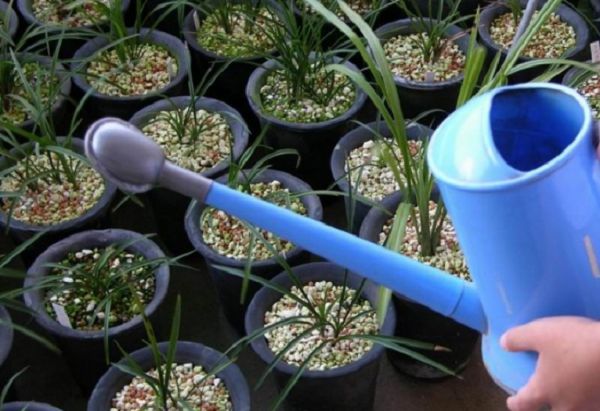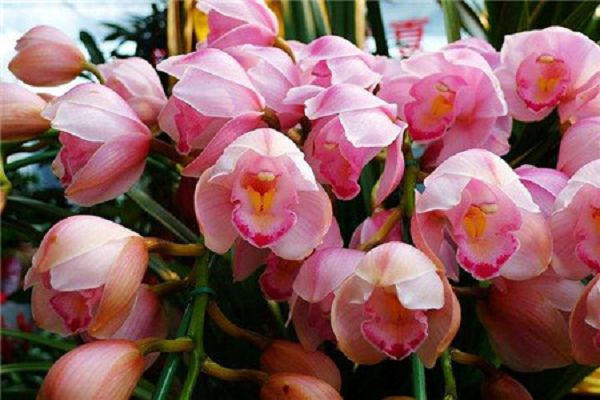Study on soilless culture technique of orchid
Soilless cultivation mechanism is an advanced cultivation method. Compared with traditional cultivation methods, soilless cultivation can scientifically match all kinds of nutrients needed by plants, and it is more suitable to cultivate plants or special plants in an environment without soil. The use of soilless cultivation technology provides better conditions for the cultivation of many plants. In recent years, soilless cultivation of orchids has become a trend. Related studies and a large number of experiments show that the use of soilless cultivation techniques in orchid cultivation is beneficial to promote the root growth of orchids and reduce the degree of diseases and insect pests of orchids. In the process of orchid soilless cultivation, breeders must also pay attention to the growth conditions of orchids, the selection of culture media and matters needing attention in soilless cultivation.
1 preparation for soilless cultivation of orchids
1.1 selection of substrate for soilless cultivation
The soilless cultivation of orchids requires the use of substrates, and the substrates used can be divided into organic substrates and inorganic substrates. Organic substrates can be divided into soft and hard, soft substrates include grain hulls, bagasse, charcoal, moss, aquatic plants, sawdust, edible fungus waste; hard substrates include bark, fern stems and roots. The inorganic matrix includes river sand, vermiculite, perlite, volcanic stone and pumice. Orchids need to pay attention to avoid the use of a separate substrate, as far as possible to choose the combination of organic and inorganic to ensure adequate nutrients, in the matrix mixing should pay attention to retain appropriate pores to facilitate the growth of orchid roots.
1.2 selection of flowerpots
In addition to considering the cultivation substrate of soilless cultivation, the flowerpot for soilless cultivation is also a content that must be paid attention to in the preparation of soilless culture. the flowerpot with poor air permeability can also affect the growth of the root system of orchid, and then have a bad effect on the cultivation quality of orchid. For example, porcelain glazed flowerpots are aesthetic flowerpots, but because of their poor filtration and air permeability, they are not very suitable for orchid soilless cultivation, so they are often not used; purple sand flowerpots have good air permeability and water filtration, but because of the high cost, it is not recommended to be widely used; ordinary mud pots or tile pots have good air permeability, water filtration effect, and low cost, so they can be used when cultivating seedlings. In addition, when selecting the orchid basin of soilless cultivation, we should pay attention to the shape of the orchid basin and choose the high barrel basin as far as possible to ensure that there are hydrophobic and porous holes in the lower part of the orchid basin to promote the growth of the orchid root system. The newly purchased pottery basin needs to pay attention to the treatment of immersion and annealing, and attention should also be paid to disinfection when using the old basin to better ensure the quality of soilless cultivation.
2 the process of soilless cultivation
2.1 Orchid propagation
The propagation of orchids can be divided into two ways: sowing and ramets. Because the seeds of orchids are small and the germination rate is low, ramet propagation is still mainly used in the process of orchid cultivation. Due to the growth habits of orchids, the ramet propagation of orchids is mostly carried out in spring and autumn, and the ramet time can be selected according to the flowering time of orchids. Generally, orchids blooming in early spring can be considered at the end of autumn, and orchids can be selected in early spring in summer. When the orchid is propagated, the root system can be divided into several clumps with a knife, and pay attention to pruning the roots and clumps with scissors to remove withered roots and decaying roots. some withered plants need to be soaked in clean water until they absorb enough water before operation. The initially treated orchid seedlings need to be soaked in broad-spectrum insecticide diluent to prevent diseases and insect pests. After the root system of orchid seedlings has been pruned and fungi and bacteria have been killed, they can be slightly cleaned and cultivated in pots after drying.
2.2 Management of water and fertilizer
The control and management of water and fertilizer in soilless cultivation of orchids is an important content to ensure the quality of orchids. Generally speaking, the orchid cultivated in soilless culture has a thicker plant family and poor water retention under soilless conditions, so it is necessary to pay special attention to the watering times of orchids. The watering times of orchids in soilless cultivation will be 3 times and 4 times more than that in soilless culture, and the watering times can be adjusted according to different seasons and air temperature. For example, the growth of orchids in winter and spring is not very exuberant, and watering can be done in the morning and evening, while in summer and autumn, the water demand of orchids in the growing period is larger, and the watering times must be considered according to the actual situation of the cultivation substrate. adhering to the principle of watering orchids rather than dry, to ensure sufficient water during the growth of orchids. The fertilizers applied to orchid cultivation are mainly base fertilizer and compound fertilizer, base fertilizer can use mature organic fertilizer, plant ash water, rice washing water, green grass juice and so on can provide better fertilizer conditions for orchid growth. Several problems that should be paid attention to when fertilizing orchids in soilless cultivation are that it is not suitable to apply fertilizer when the temperature is too high or too low, the concentration of fertilization should be light and it is not easy to apply thick fertilizer, and attention should be paid to watering thoroughly after each fertilization. to ensure that the fertilizer can be evenly absorbed by the orchid. In addition, when applying compound fertilizer, it is necessary to pay attention to the rational use of nitrogen, phosphorus and potassium fertilizer after dissolving water.
2.3 Prevention and control of diseases and pests
The disease and pest control of orchid is of great significance to its growth and development. Although orchid diseases and insect pests are relatively reduced under soilless cultivation, the corresponding pest control work should be done well. Common orchid diseases and insect pests include rot, orchid anthracnose, shell insects, etc., different diseases and insect pests have certain incentives, good pest prevention and reasonable control incentives can better ensure the growth of orchids. For example, the occurrence of rot has a certain relationship with high temperature. In the case of high temperature, carbendazim and streptomycin can be sprayed to prevent rot; anthrax usually occurs under high temperature. Potassium permanganate solution can be used to treat its leaves after onset to avoid deterioration of the disease.
2.4 Orchid overwintering preparation
There are many varieties of orchids, and the cold tolerance of orchids is not exactly the same. In the process of soilless cultivation of orchids, breeders need to pay attention to consider different cultivation methods according to the properties of orchids. In the process of soilless cultivation, the orchids were divided according to their cold tolerance. During the preparation for overwintering, the cold-intolerant varieties vulnerable to freezing injury were sent to the greenhouse for culture, and the more cold-tolerant varieties were cultured under suitable indoor conditions according to their growth temperature. The preparation for overwintering must be prepared according to the varieties of orchids, solar terms and temperature, so as to avoid freezing injury in orchid cultivation.
3 concluding remarks
The soilless cultivation of orchids provides more high-quality conditions for the growth of orchids. High-quality soilless cultivation is conducive to the growth of orchids and avoids the occurrence of diseases and insect pests to a certain extent. In the process of soilless cultivation of orchids, selecting high-quality cultivation substrate, setting the environment according to the living habits of orchids and doing a good job of pest prevention can improve the success rate of soilless cultivation and the cultivation quality of flowers. Strengthening the control and management of each link of soilless cultivation of orchids will help to improve the budding rate and flowering rate of orchids and better ensure the quality of orchids cultivation.
Related
- Is the orchid suitable for indoor use? Is it good for the body?
- How to prevent the empty root of orchids?
- What to do after the crab claw orchid is withered?
- Why are the leaves of orchids always yellow? Fertilizing and watering.
- Can the root of the gentleman orchid be saved if it is rotten?
- Diagnosis and treatment of cotton-blowing beetle insects in Cymbidium
- There is a way for a gentleman's orchid to rot.
- What is the most suitable temperature and humidity for the orchid?
- How to raise a gentleman's orchid? Cultivation techniques of Cymbidium
- How to prepare the nutritive soil for the cultivation of Cymbidium



